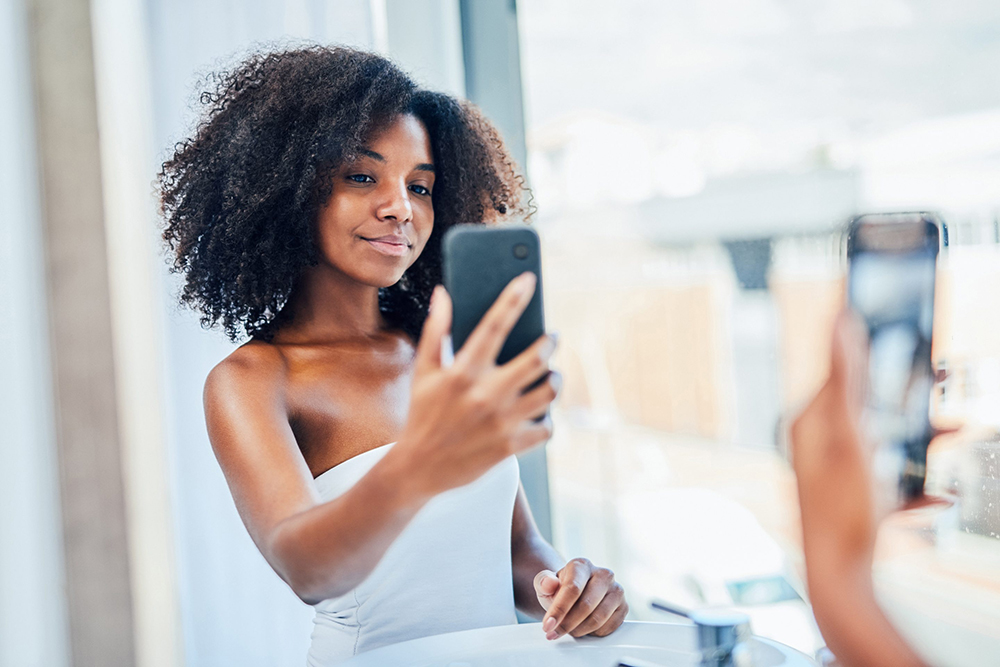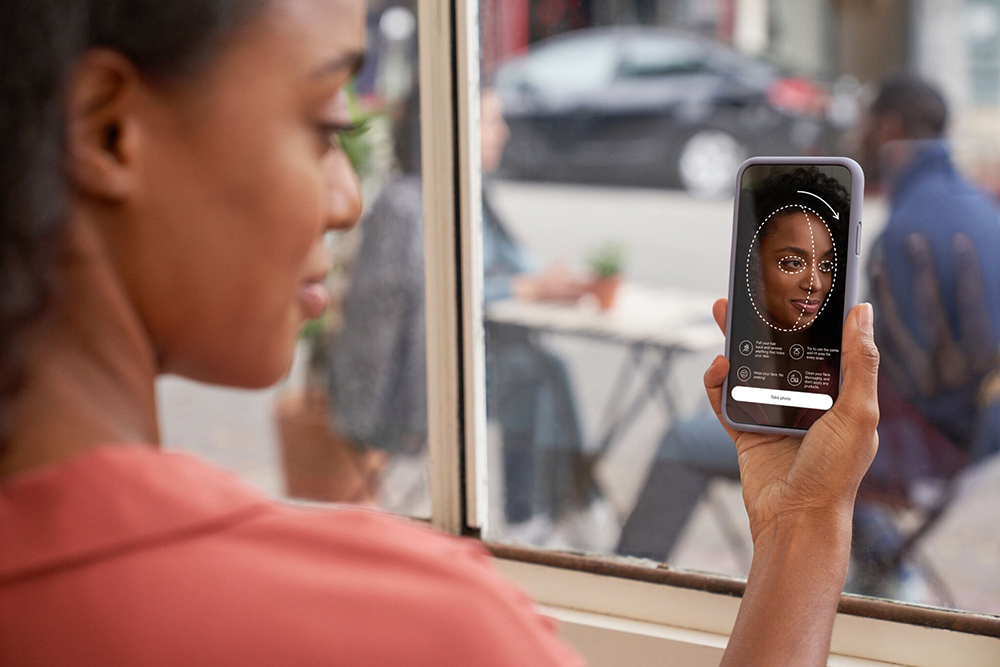
一张图片可能胜过千言万语,但自拍照却胜过全面的皮肤护理检测——至少在涉及人工智能的情况下是这样的。
对于全球护肤品牌露得清(Neutrogena)来说,基于人工智能的人脸扫描技术提供的创新手段能够让品牌与客户进行互动。露得清于2020年推出免费服务Skin360,可以扫描用户的自拍照,并根据黑斑、皱纹和光滑度等六大关键因素对用户的皮肤健康状况进行评分。
该服务会根据用户提供的数据,为用户推荐能够解决特定皮肤问题的成分(例如针对黑眼圈的维生素C)以及露得清产品,帮助用户拥有更健康的皮肤。露得清将这一工具视为消费者长期追踪脸色的一种方式。露得清的母公司科赴(Kenvue)的创新团队“未来皮肤健康、美容与技术”(Future of Skin Health, Beauty and Technology)的主管德西蕾·道对《财富》杂志表示:“当你的皮肤随着季节、生活方式或荷尔蒙的变化而变化时,这项服务可以帮助你建立日常护肤程序,并让你有机会重新评估整体护肤方案。”
人工智能技术正在被广泛应用于从食品杂货到窗户清洁等非科技行业。近年来,护肤品行业也开始采用人工智能技术。丝塔芙(Cetaphil)、欧莱雅(L’Oréal)和雅诗兰黛(Estée Lauder)都提供类似Skin360的服务,能够分析用户的照片,并推荐护肤程序(当然,使用的都是品牌自身的产品)。
露得清希望通过Skin360使皮肤护理“大众化”,让用户更容易获得有关自己皮肤的信息和解决相关问题的产品,并把露得清定位为皮肤护理技术的领导者。
露得清并未声称Skin360可以替代就医,解决与皮肤相关医疗问题,《财富》杂志采访的专家强调,消费者不应该依赖人脸扫描应用程序来解决这一问题。但是,作为一种为用户提供适合其需求的日常护肤产品的工具,Skin360凸显了人工智能技术如何改变露得清等老牌企业的做法。
科赴没有透露Skin360为公司贡献了多少收入,也没有透露露得清为公司贡献了多少收入。但其“皮肤、健康和美容”(Skin, Health, and Beauty)部门[包括露得清以及艾维诺(Aveeno)和培健(Rogaine)等公司]在2023年的销售额为43.8亿美元,占总销售额的28%。
它是如何运作的
露得清与中国台湾的人工智能和增强现实技术提供商完美公司(Perfect Corp)合作开发了Skin360。完美公司的智能手机应用程序允许用户虚拟试妆、编辑照片中的面部特征、去除图像里的粉刺等。就Skin360这项服务而言,完美公司使用卷积神经网络技术扫描自拍照,这一机器学习算法能够发现图像中存在的特定模式。同时,露得清的前母公司强生公司(Johnson & Johnson)建立的算法会根据分析结果推荐适合用户需求的产品。在推出Skin360这项服务时,露得清是强生公司旗下的公司,但强生公司后来将其消费者保健业务分拆给独立公司科赴。

在分析图像时,Skin360会查看超过10万个像素来分析用户的皮肤。训练数据包括1万多张在超过10种照明类型下不同性别、种族、皮肤类型和年龄的人脸图像。道说,为了确定人工智能评分的准确性,露得清的成像科学家根据一种称为格里菲斯量表的皮肤科评分系统,对大量图像(具有统计显著性)进行了人工评分。露得清发现这两个评分之间存在“显著相关性”。据该公司称,迄今为止,Skin360已经分析了超过100万张人脸图像。
虽然该网站不保存用户图像,但它会通过电子邮件向个人发送包含评分和产品推荐的报告。通过长期使用这项服务,消费者还可以追踪使用露得清推荐的产品是否能够改善皮肤状况。
“尚未实现”个性化皮肤护理
人工智能人脸扫描仪在化妆品公司里的普及,反映了更广泛的朝个性化护肤方向发展的努力,比如,更量身定制的购物体验或定制产品。
麦肯锡公司(McKinsey & Company)在2021年发现,71%的消费者期待实现个性化购物。电商交易软件公司Bolt的一项调查显示,到2023年,75%的购物者表示他们会为个性化体验支付更多费用。例如,圣罗兰(Yves Saint Laurent)的美容业务销售一款由母公司欧莱雅开发的设备,该设备可以混合定制口红颜色。2023年,露得清与维生素公司Nourished合作,根据Skin360的测试结果,为个人3D打印软糖补充剂。露得清与Nourished的合作关系即将宣告结束,这家护肤品公司如今在商店里销售露得清品牌的维生素。
皮肤科医生兼研究员拉杰·乔瓦蒂亚告诉《财富》杂志,虽然各大公司都在尝试个性化治疗,这也是“医学领域的一大目标之一,但我们还没有实现这一目标。”他说,如何把像Skin360这样的工具与皮肤科医生的工作方式相结合还存在问题。
乔瓦蒂亚称,Skin360这样的应用程序不应该取代皮肤科问诊(科赴的道同意这一观点)。乔瓦提亚还表示,最理想的情况是让患者在家里进行皮肤分析,然后带着应用程序推荐的产品清单问诊。皮肤科医生对患者的皮肤病史有更深入的了解,因此他们能够指导患者进行选择,避免使用含以往会产生不良反应的成分的产品。
乔瓦蒂亚谈到露得清的服务时说:“这在一定程度上也是一种营销策略。我赞同为人们推荐适合其需求的产品的想法”,但最好是“在与真正的皮肤科医生合作的情况下进行”。
纽约医学院(New York Medical College)的皮肤学系主任比詹·萨法伊认为,Skin360主要是一种销售工具。他对《财富》杂志表示:“我希望这些公司还可以考虑到其他因素。比如,感染会让皮肤看起来不同。”他说,如果露得清将感染诊断为痤疮,并推荐相关产品,对患者来说就可能弊大于利。
与此同时,类似的模式识别技术也有可能帮助医生直观地识别带状疱疹和皮疹等感染。像Ada Health这样的移动应用程序正是在做这样的事情。萨法伊说,当把其用作诊断工具时,人工智能“目前还不能够做到百分之百准确,但也许有一天技术会比人类更智能,而这一天即将到来”。
放弃硬件
露得清基于人工智能的皮肤分析服务经过了多年的发展。该项目最初于2018年推出,带有一个单独的手机附件。这款名为SkinScanner的设备最初售价为50美元,后来涨到60美元,它可以固定在智能手机摄像头上,提供用户皮肤的近距离图像,能够与高端皮肤科设备拍摄的照片相媲美。SkinScanner配备了12个高功率LED灯、一个放大倍率达30倍的镜头和一个用于读取水分含量的湿度传感器。与Skin360同名的配套应用程序可以跟踪进展情况并推荐产品。
但在2020年,露得清放弃了硬件。Skin360如今是一项网站服务,而不是一个应用程序,它分析的是整个面部的图像,而不是放大的特写。据该公司称,现在的分析速度比最初的应用程序快五倍,平均在一秒钟内完成。当时,露得清表示,“对消费者需求的宝贵洞察”是进行战略转型的原因之一。
道告诉《财富》杂志:“这项服务更便于用户使用智能手机的功能,而不必购买单独的设备。”
作为一个价格相对低廉的护肤品牌,露得清可能因为要求用户购买附件而把部分客户群排除在外。而作为一项免费服务,Skin360能够扩大露得清产品的潜在客户群。
基于自拍照的分析也让露得清得以进军沃尔玛(Walmart)等零售店。作为限时促销活动的一部分,1,500家沃尔玛门店展示了Skin360的二维码,购物者可以在化妆品过道扫描自己的皮肤。露得清还通过沃尔玛网站向在线购物者提供Skin360服务。(财富中文网)
译者:中慧言-王芳
一张图片可能胜过千言万语,但自拍照却胜过全面的皮肤护理检测——至少在涉及人工智能的情况下是这样的。
对于全球护肤品牌露得清(Neutrogena)来说,基于人工智能的人脸扫描技术提供的创新手段能够让品牌与客户进行互动。露得清于2020年推出免费服务Skin360,可以扫描用户的自拍照,并根据黑斑、皱纹和光滑度等六大关键因素对用户的皮肤健康状况进行评分。
该服务会根据用户提供的数据,为用户推荐能够解决特定皮肤问题的成分(例如针对黑眼圈的维生素C)以及露得清产品,帮助用户拥有更健康的皮肤。露得清将这一工具视为消费者长期追踪脸色的一种方式。露得清的母公司科赴(Kenvue)的创新团队“未来皮肤健康、美容与技术”(Future of Skin Health, Beauty and Technology)的主管德西蕾·道对《财富》杂志表示:“当你的皮肤随着季节、生活方式或荷尔蒙的变化而变化时,这项服务可以帮助你建立日常护肤程序,并让你有机会重新评估整体护肤方案。”
人工智能技术正在被广泛应用于从食品杂货到窗户清洁等非科技行业。近年来,护肤品行业也开始采用人工智能技术。丝塔芙(Cetaphil)、欧莱雅(L’Oréal)和雅诗兰黛(Estée Lauder)都提供类似Skin360的服务,能够分析用户的照片,并推荐护肤程序(当然,使用的都是品牌自身的产品)。
露得清希望通过Skin360使皮肤护理“大众化”,让用户更容易获得有关自己皮肤的信息和解决相关问题的产品,并把露得清定位为皮肤护理技术的领导者。
露得清并未声称Skin360可以替代就医,解决与皮肤相关医疗问题,《财富》杂志采访的专家强调,消费者不应该依赖人脸扫描应用程序来解决这一问题。但是,作为一种为用户提供适合其需求的日常护肤产品的工具,Skin360凸显了人工智能技术如何改变露得清等老牌企业的做法。
科赴没有透露Skin360为公司贡献了多少收入,也没有透露露得清为公司贡献了多少收入。但其“皮肤、健康和美容”(Skin, Health, and Beauty)部门[包括露得清以及艾维诺(Aveeno)和培健(Rogaine)等公司]在2023年的销售额为43.8亿美元,占总销售额的28%。
它是如何运作的
露得清与中国台湾的人工智能和增强现实技术提供商完美公司(Perfect Corp)合作开发了Skin360。完美公司的智能手机应用程序允许用户虚拟试妆、编辑照片中的面部特征、去除图像里的粉刺等。就Skin360这项服务而言,完美公司使用卷积神经网络技术扫描自拍照,这一机器学习算法能够发现图像中存在的特定模式。同时,露得清的前母公司强生公司(Johnson & Johnson)建立的算法会根据分析结果推荐适合用户需求的产品。在推出Skin360这项服务时,露得清是强生公司旗下的公司,但强生公司后来将其消费者保健业务分拆给独立公司科赴。
在分析图像时,Skin360会查看超过10万个像素来分析用户的皮肤。训练数据包括1万多张在超过10种照明类型下不同性别、种族、皮肤类型和年龄的人脸图像。道说,为了确定人工智能评分的准确性,露得清的成像科学家根据一种称为格里菲斯量表的皮肤科评分系统,对大量图像(具有统计显著性)进行了人工评分。露得清发现这两个评分之间存在“显著相关性”。据该公司称,迄今为止,Skin360已经分析了超过100万张人脸图像。
虽然该网站不保存用户图像,但它会通过电子邮件向个人发送包含评分和产品推荐的报告。通过长期使用这项服务,消费者还可以追踪使用露得清推荐的产品是否能够改善皮肤状况。
“尚未实现”个性化皮肤护理
人工智能人脸扫描仪在化妆品公司里的普及,反映了更广泛的朝个性化护肤方向发展的努力,比如,更量身定制的购物体验或定制产品。
麦肯锡公司(McKinsey & Company)在2021年发现,71%的消费者期待实现个性化购物。电商交易软件公司Bolt的一项调查显示,到2023年,75%的购物者表示他们会为个性化体验支付更多费用。例如,圣罗兰(Yves Saint Laurent)的美容业务销售一款由母公司欧莱雅开发的设备,该设备可以混合定制口红颜色。2023年,露得清与维生素公司Nourished合作,根据Skin360的测试结果,为个人3D打印软糖补充剂。露得清与Nourished的合作关系即将宣告结束,这家护肤品公司如今在商店里销售露得清品牌的维生素。
皮肤科医生兼研究员拉杰·乔瓦蒂亚告诉《财富》杂志,虽然各大公司都在尝试个性化治疗,这也是“医学领域的一大目标之一,但我们还没有实现这一目标。”他说,如何把像Skin360这样的工具与皮肤科医生的工作方式相结合还存在问题。
乔瓦蒂亚称,Skin360这样的应用程序不应该取代皮肤科问诊(科赴的道同意这一观点)。乔瓦提亚还表示,最理想的情况是让患者在家里进行皮肤分析,然后带着应用程序推荐的产品清单问诊。皮肤科医生对患者的皮肤病史有更深入的了解,因此他们能够指导患者进行选择,避免使用含以往会产生不良反应的成分的产品。
乔瓦蒂亚谈到露得清的服务时说:“这在一定程度上也是一种营销策略。我赞同为人们推荐适合其需求的产品的想法”,但最好是“在与真正的皮肤科医生合作的情况下进行”。
纽约医学院(New York Medical College)的皮肤学系主任比詹·萨法伊认为,Skin360主要是一种销售工具。他对《财富》杂志表示:“我希望这些公司还可以考虑到其他因素。比如,感染会让皮肤看起来不同。”他说,如果露得清将感染诊断为痤疮,并推荐相关产品,对患者来说就可能弊大于利。
与此同时,类似的模式识别技术也有可能帮助医生直观地识别带状疱疹和皮疹等感染。像Ada Health这样的移动应用程序正是在做这样的事情。萨法伊说,当把其用作诊断工具时,人工智能“目前还不能够做到百分之百准确,但也许有一天技术会比人类更智能,而这一天即将到来”。
放弃硬件
露得清基于人工智能的皮肤分析服务经过了多年的发展。该项目最初于2018年推出,带有一个单独的手机附件。这款名为SkinScanner的设备最初售价为50美元,后来涨到60美元,它可以固定在智能手机摄像头上,提供用户皮肤的近距离图像,能够与高端皮肤科设备拍摄的照片相媲美。SkinScanner配备了12个高功率LED灯、一个放大倍率达30倍的镜头和一个用于读取水分含量的湿度传感器。与Skin360同名的配套应用程序可以跟踪进展情况并推荐产品。
但在2020年,露得清放弃了硬件。Skin360如今是一项网站服务,而不是一个应用程序,它分析的是整个面部的图像,而不是放大的特写。据该公司称,现在的分析速度比最初的应用程序快五倍,平均在一秒钟内完成。当时,露得清表示,“对消费者需求的宝贵洞察”是进行战略转型的原因之一。
道告诉《财富》杂志:“这项服务更便于用户使用智能手机的功能,而不必购买单独的设备。”
作为一个价格相对低廉的护肤品牌,露得清可能因为要求用户购买附件而把部分客户群排除在外。而作为一项免费服务,Skin360能够扩大露得清产品的潜在客户群。
基于自拍照的分析也让露得清得以进军沃尔玛(Walmart)等零售店。作为限时促销活动的一部分,1,500家沃尔玛门店展示了Skin360的二维码,购物者可以在化妆品过道扫描自己的皮肤。露得清还通过沃尔玛网站向在线购物者提供Skin360服务。(财富中文网)
译者:中慧言-王芳
Pictures may be worth a thousand words, but selfies are worth a skin care overhaul—at least when artificial intelligence is involved.
For Neutrogena, the global skin care brand, AI-powered face scanning technology is providing an innovative means of interacting with customers. Skin360, a free service Neutrogena launched in 2020, scans a user’s selfie and scores their skin health based on six key factors, such as dark spots, wrinkles, and smoothness.
The service suggests ingredients to address identified problem areas (vitamin C for dark circles, for instance), as well as Neutrogena products to help users achieve healthier skin based on data provided by the user. Neutrogena sees its tool as a way for consumers to track their complexion over time. “It helps you establish your everyday routine as your skin changes with the season or with lifestyle or hormonal changes—it gives you the opportunity to reassess your total regimen,” Desiree Dowe, director of the innovation team—called Future of Skin Health, Beauty and Technology—at Neutrogena parent company Kenvue, told Fortune.
AI technology is being adopted across a broad swath of non-tech industries, from grocery products to window cleaning. And in recent years, the skin care industry has latched on. Cetaphil, L’Oréal, and Estée Lauder all have services similar to Skin360 that analyze a user’s photo and recommend a skin care routine (using all of their own products, of course).
Neutrogena intends for Skin360 to democratize dermatological care by making it easier for users to get information about their own skin and the products that could address their concerns, and to position Neutrogena as a leader in skin care technology.
Neutrogena doesn’t claim that Skin360 is an alternative to seeing a doctor for skin-related medical concerns, and experts Fortune spoke to stressed that no consumer face-scanning app should be relied upon for that purpose. But as a tool for connecting people with the right products for day-to-day skin care, Skin360 highlights how AI technology is changing the practices of established businesses like Neutrogena.
Kenvue doesn’t disclose how much in revenue Skin360 has contributed to the company, nor how much Neutrogena does, for that matter. But its “Skin, Health, and Beauty” segment, which includes Neutrogena among other companies like Aveeno and Rogaine, contributed $4.38 billion in sales in 2023, representing 28% of overall sales.
How it works
Neutrogena worked alongside Taiwan-based AI and augmented reality tech provider Perfect Corp to build Skin360. Perfect’s smartphone apps allows users to virtually try on makeup, edit their facial features in photos, remove acne from images, and more. For Skin360, Perfect’s technology scans selfies using a convolutional neural network, a type of machine learning that finds patterns in images. Simultaneously, an algorithm built by Neutrogena’s former parent company Johnson & Johnson recommends the correct products based on the findings. At the time of launch, Johnson & Johnson owned Neutrogena, but the conglomerate has since spun out its consumer health business to independent company Kenvue.
To analyze an image, Skin360 looks at more than 100,000 photo pixels to analyze a user’s skin. Training data included more than 10,000 images of faces—varying genders, ethnicities, skin types, and ages—in more than 10 types of lighting. To determine the accuracy of the AI-generated scores, Neutrogena’s imaging scientists manually graded a statistically significant number of the images against a dermatology grading system called the Griffiths scale, Dowe said. Neutrogena found “significant correlation” between the two scores. Skin360 has analyzed more than 1 million facial images to date, according to the company.
While the website doesn’t save user images, it does email a report with scores and product recommendations to individuals. By continuing to use the service over time, consumers can also track whether the use of Neutrogena’s recommended products improves their skin.
Personalized skin care is “not there yet”
The spread of AI face scanners across cosmetics companies reflects a broader push toward personalized skin care—a more tailored shopping experience or custom-made products, for example.
McKinsey & Company found in 2021 that 71% of consumers expect personalization in shopping. In 2023, 75% of shoppers said they would pay more for a personalized experience, according to a survey from Bolt, a software company for e-commerce transactions. Yves Saint Laurent’s beauty business sells a device created by parent company L’Oréal that mixes custom lipstick shades, for example. Last year, Neutrogena partnered with vitamin company Nourished to 3D-print gummy supplements for individuals based on their Skin360 results. Neutrogena’s partnership with Nourished is coming to an end, and the skin care company is now selling Neutrogena-branded vitamins in stores.
But while companies are experimenting in personalization, and it’s “one of the big goals in medicine, we’re sort of not there yet,” dermatologist and researcher Raj Chovatiya told Fortune. There are questions about how tools like Skin360 fit into the way dermatologists work, he said.
Chovatiya says apps like Skin360 shouldn’t replace seeing a dermatologist (Kenvue’s Dowe agrees). The best-case scenario, Chovatiya said, is for patients to perform their skin analysis at home and then bring the app’s list of recommended products to an appointment. Dermatologists—who have greater context about a patient’s skin history—can then talk them through the options and direct them away from ingredients they have reacted badly to in the past.
“It’s partially a marketing strategy too,” Chovatiya said about Neutrogena’s service. “I like the idea of trying to connect people to the right kinds of products for their skin,” but it’s best utilized “when done in conjunction with an actual dermatologist.”
Bijan Safai, chair of the New York Medical College’s department of dermatology, sees Skin360 as primarily a sales tool. “There are other factors I hope these companies are taking into consideration,” he told Fortune. “Infection can make skin look different, for example.” If Neutrogena identifies an infection as acne and recommends a product, it could do more harm than good to patients, he said.
At the same time, similar pattern recognition technology has the potential to help visually identify infections like shingles and rashes. Mobile apps like Ada Health are doing exactly that. When used as a diagnostic tool, AI “is not 100% accurate at this point, but there may be a time when technology is smarter than humans, and that is coming,” Safai said.
Abandoned hardware
Neutrogena’s AI skin analysis service has evolved over the years. The project originally launched in 2018 with a separate phone attachment. The SkinScanner device, available at launch for $50 and then increased to $60, anchored to a smartphone camera to provide up-close images of a user’s skin that were comparable to photos taken with high-end dermatological devices. SkinScanner incorporated 12 high-powered LED lights, a 30-times magnification lens, and a moisture sensor to read hydration levels. An accompanying app under the same Skin360 name tracked progress and recommended products.
But in 2020, Neutrogena ditched its hardware. Skin360 is now a website service rather than an app, and it analyzes an image of the whole face instead of magnified close-ups. Analysis is now five times faster than the original app, completed within an average of one second, according to the company. At the time, Neutrogena cited “valuable insight into what consumers wanted” as a reason for the strategy shift.
“It made it a lot more accessible to users who could use the power of their smartphone rather than having to buy a separate device,” Dowe told Fortune.
As a comparatively inexpensive skin care brand, Neutrogena might have excluded some of its customer base by requiring the purchase of an attachment. And as a free service, Skin360 is able to reach a broader audience of potential customers for Neutrogena products.
The selfie-based analysis has also allowed Neutrogena to expand into retail locations like Walmart. As part of a limited promotion, 1,500 Walmart stores displayed a QR code for Skin360 so shoppers could scan their skin in the makeup aisle. Neutrogena also offers Skin360 via the Walmart website for online shoppers.






